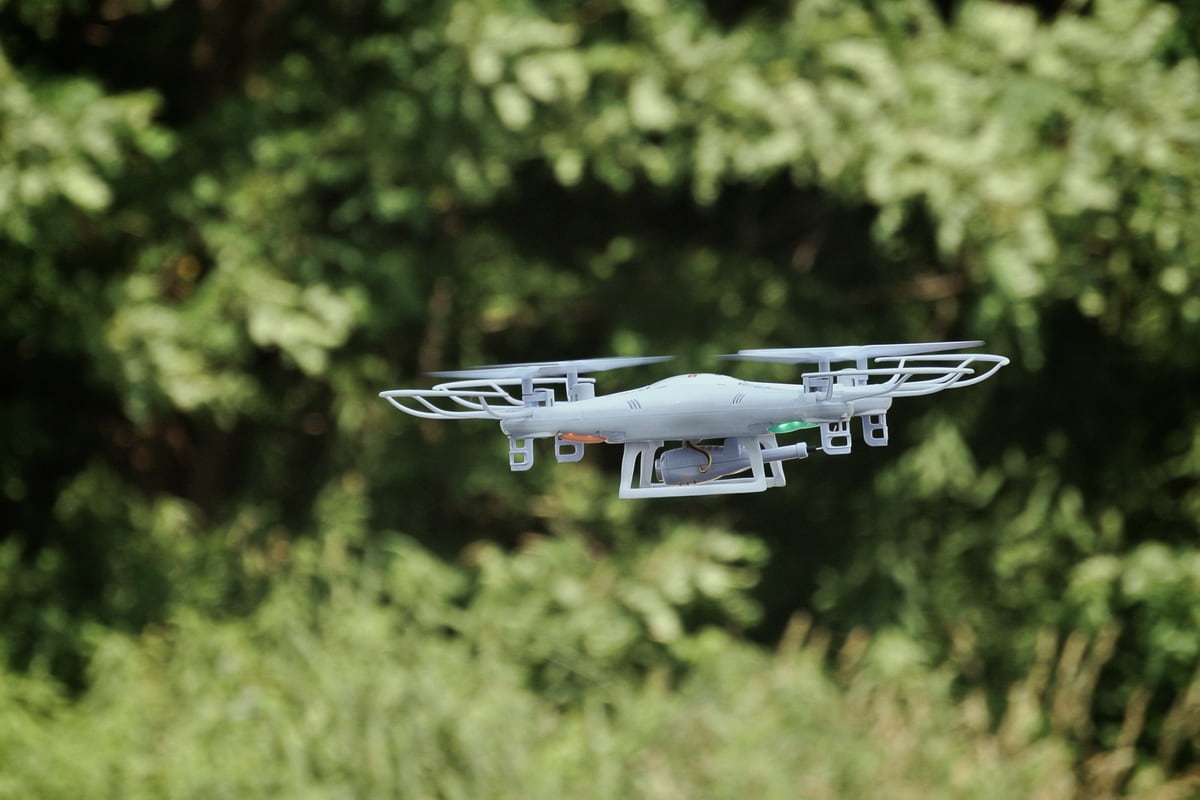Whoosh! Did you just spot that flying tech wonder above you? No, it’s not a bird. Nope, not Superman either. It’s a drone! The world of drones is as vast as the skies they roam. These high-flying gizmos have zipped their way from sci-fi films straight into our backyards, becoming an integral part of industries, hobbies, and even art.
From the farm fields to your front door delivering packages, drones have revolutionized the way we see and interact with the world. Curious? Well, fasten your seatbelts (or propellers) as we embark on a whirlwind journey through 25 fun facts about drones.
1. Drones’ Ancient History
Let’s time travel a bit! The idea of using unmanned devices for warfare isn’t a 21st-century marvel. It dates back to 1849 when the Austrians attacked Venice using explosive-laden balloons.
While these weren’t the sophisticated tech wonders we know today, they surely were the great-great-granddaddies of today’s drones. History: 1, Boredom: 0.

Image source: Wikimedia Commons
2. Drone vs. The Bees
Ever wonder why these gadgets are called drones? They owe their name to the male honeybee, which is also termed as a ‘drone’.
Just like male honeybees, which buzz about leading relatively aimless lives (sorry, guys), drones hover and zoom around, albeit with more purpose. Talk about being inspired by nature in the tech world!
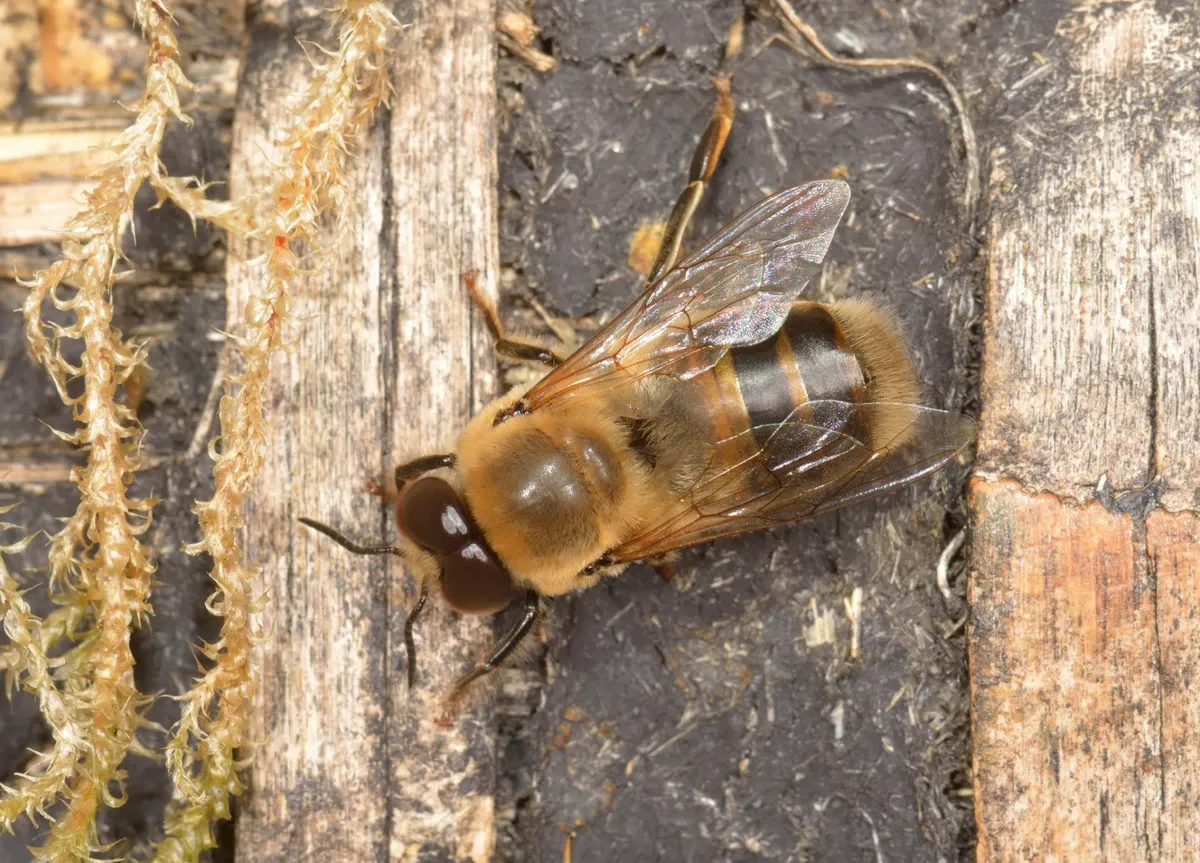
Image source: beekeepclub.com
3. Lights, Camera, Drone!
When it comes to getting that perfect cinematic aerial shot, drones are the unsung heroes of the film industry. Drone photography is changing the way filmmakers capture the world, offering angles and perspectives previously only dreamt of.
That breathtaking scene from your favorite movie where the camera soars over vast landscapes or cityscapes? Chances are, a drone was the superstar behind it.
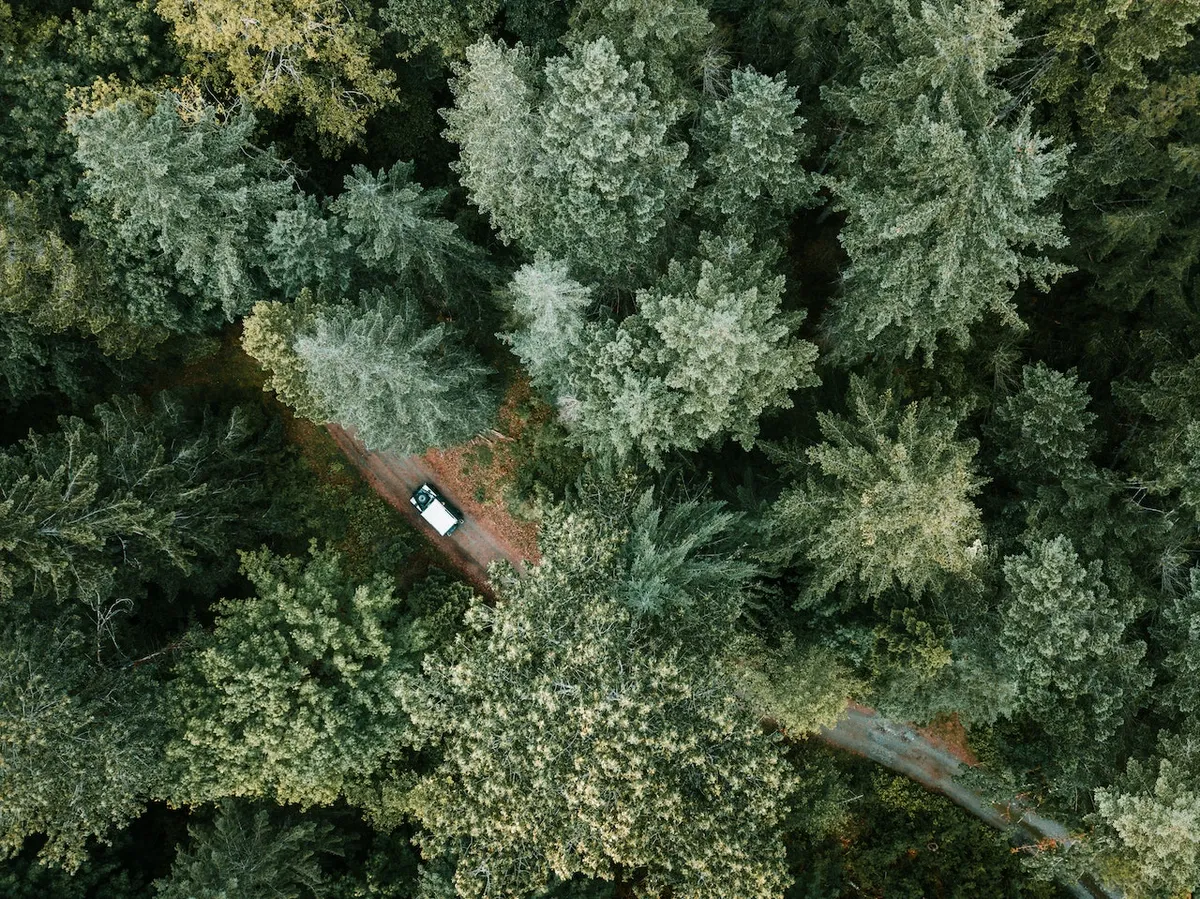
Taryn Elliott / Pexels
4. Drones in Agriculture
Remember those huge farming machines trudging along the vast expanses of fields? Enter the agriculture drone! They might not look as massive, but they surely pack a punch.
Drones in agriculture are the unseen heroes making our salads possible. Whether it’s scanning the health of crops using infrared, monitoring vast fields for pests, or even optimizing irrigation, drones are on it.
By providing accurate real-time data, they allow farmers to take action immediately, reducing waste and ensuring that the crops we eat are of the best quality. And, think about it, in the future, a drone might be responsible for ensuring that the apple you’re eating is top-notch!
5. Medical Drones to the Rescue!
Think of the last time you awaited a critical medical delivery. Now, imagine that package being swiftly and efficiently delivered to your doorstep by a medical drone. With road traffic, rough terrains, and other logistical barriers, sometimes it’s faster to fly. Especially in emergencies, every second count.
Drones are stepping in to bridge this gap, becoming an essential part of emergency medical services (EMS). They’re speeding to locations with essential medical supplies, organ transplants, and even vaccines. These winged saviors ensure that help arrives when and where it’s needed the most. The sky is not the limit; it’s the route!
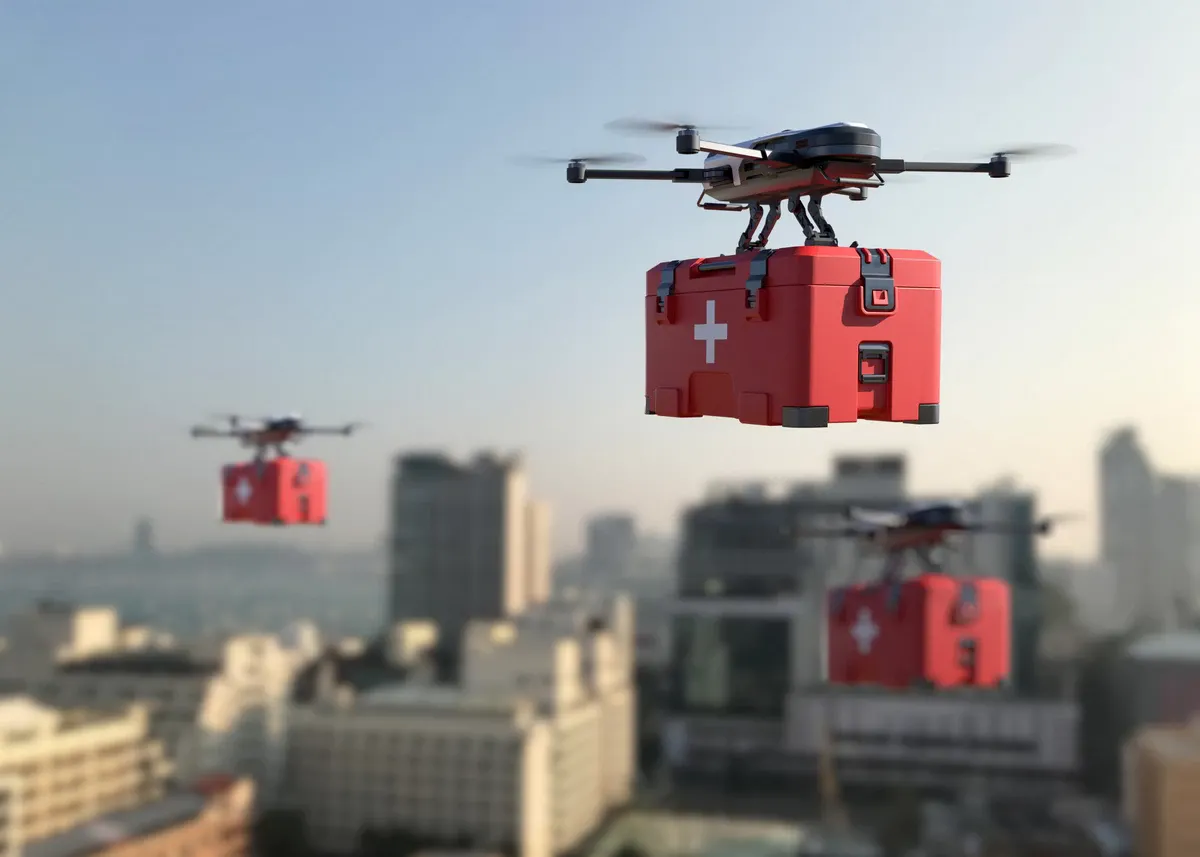
Image source: tsaformazione.it
6. Drones and Pizza? Yes, please!
No, this isn’t a cheesy joke. The future of pizza delivery is soaring high, quite literally. Imagine this: You’re craving a pizza. You place an order. And instead of the familiar motorcycle vroom, you hear a buzz in the sky. You look up, and there it is – your pizza, gently descending from a drone, straight to your backyard.
Sounds like a scene from a sci-fi movie, right? But companies are genuinely testing this out. It’s fast, efficient, and, let’s admit it, super cool! So, the next time you’re dreaming of that margherita, remember it might just fly to you in the future!
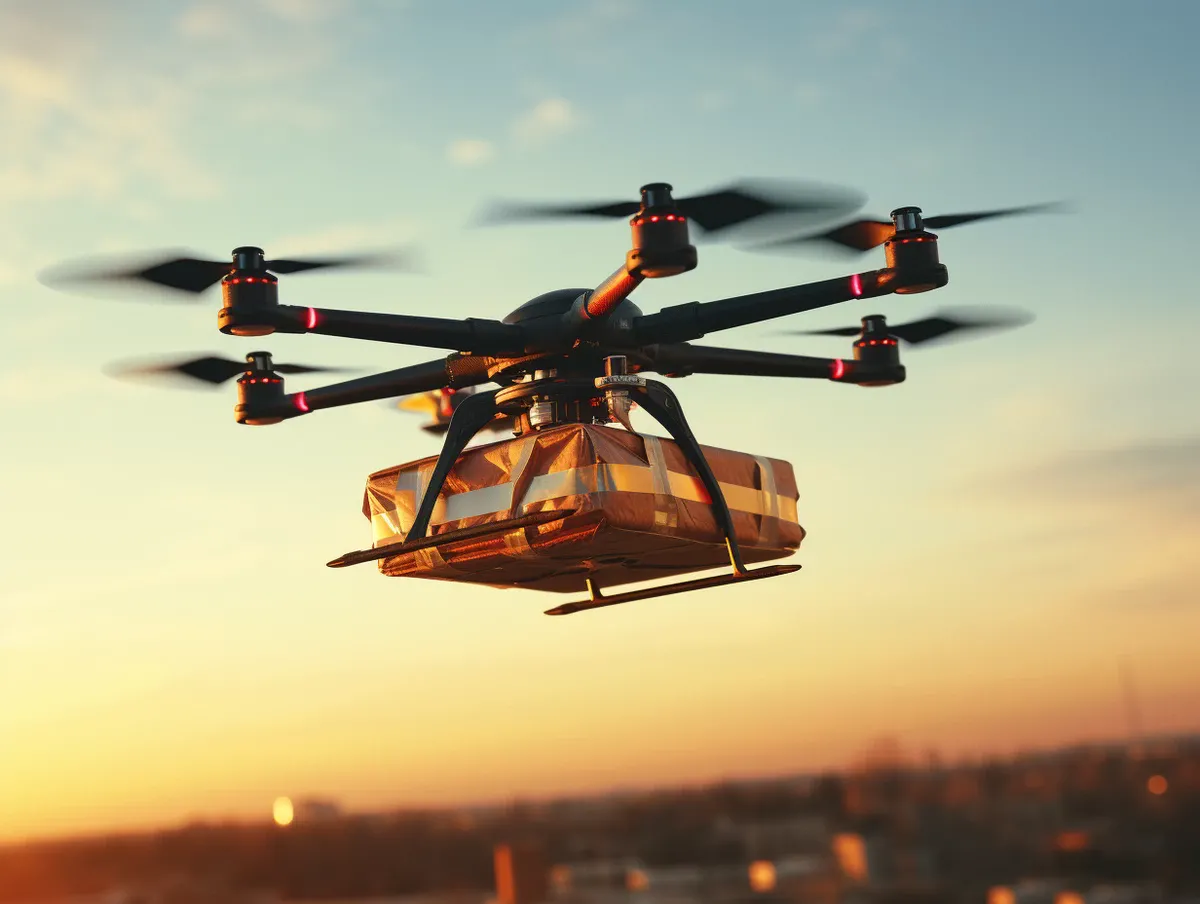
7. The Lifesaving Swims of Drones
Okay, this might surprise you: not all drones are obsessed with the skies. Some prefer a nice swim! These underwater drones are changing the game in oceanography, marine research, and most importantly, saving lives.
In beaches with high drowning statistics, drones equipped with floatation devices are deployed. The moment someone’s in trouble, they swoop (or should we say, ‘dive’) into action, reaching the person faster than a lifeguard. Talk about a lifesaver that doesn’t even need to catch its breath!
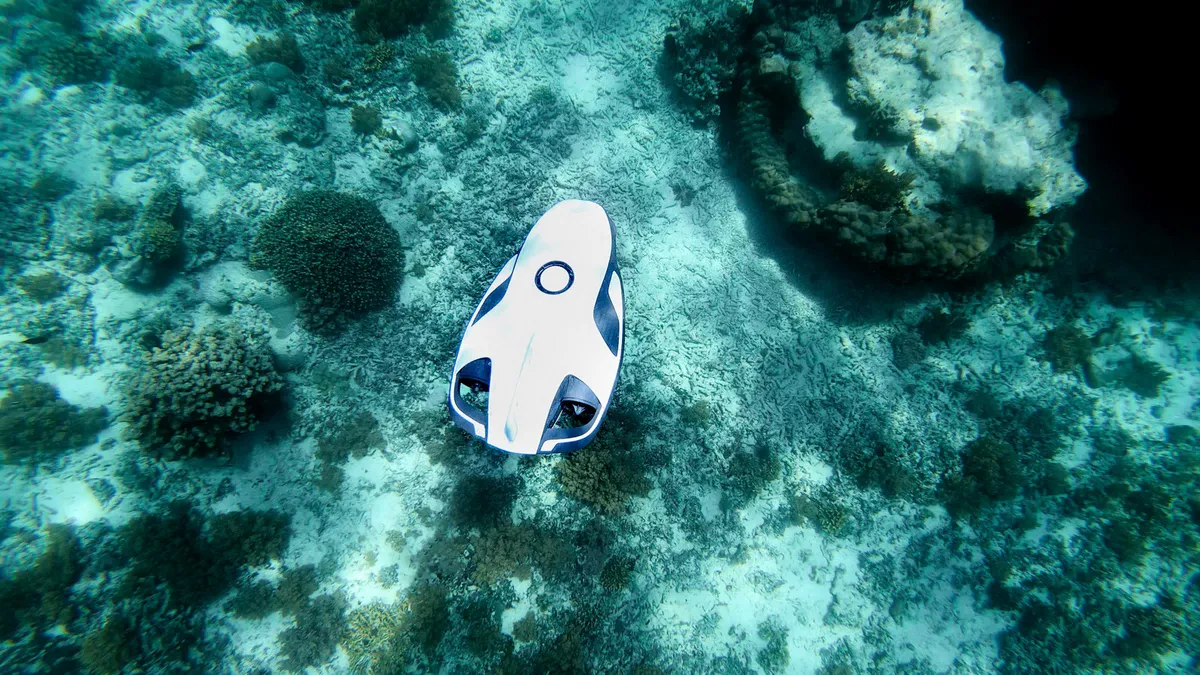
Image source: boatinternational.com
8. Drones in the Combat Zone
While the thought of drones might conjure up images of high-tech toys or innovative delivery mechanisms, let’s not forget their intense role in the military.
Military drones have been game-changers in modern warfare. These unmanned aerial vehicles (UAVs) can perform a range of tasks from surveillance to actual combat, without putting human lives directly in danger. Moreover, they can operate in conditions that might be deemed too risky for piloted aircraft.
Remember, who invented drones originally was for combat and military applications before they found their way into our backyards and industries.
https://youtu.be/p4np2YFojcs
9. Drone Racing – The Sport of the Future
Forget Formula 1; the real adrenaline-packed race now happens in the skies! Drone racing is zooming into the sports world, turning many heads (both literally and figuratively).
Participants control drones equipped with cameras, racing them through obstacle courses at breakneck speeds. And for viewers? They get a first-person view, thanks to VR headsets, making them feel like they’re flying!
If you ever doubted that in the future sports might take a turn for the techy, here’s your proof. Ready, set, drone!
10. The 4 Types of Drones
Alright, let’s get a tad technical but keep it fun. Drones come in all shapes and sizes, each suited for a specific purpose. So, what are the 4 types of drones?
- Multi-Rotor Drones: The most common type, ideal for aerial photography and short distances.
- Fixed-Wing Drones: These bad boys look more like traditional planes and can cover longer distances without needing a recharge.
- Single Rotor Drones: Resembling mini helicopters, they’re known for their endurance.
- Fixed-Wing Hybrid Drones: Think of them as the Swiss Army knife in the drone world – they can hover, take off, and land vertically.
So, the next time someone brags about their drone, ask them its type and watch them get flustered!

Image source: researchgate.net
11. The Mind-boggling Distances Drones Can Cover
Ever pondered over the question: “How far can drones fly?” Well, while your neighbor’s flashy drone might cover a couple of miles before needing a juice-up, some high-end drones have mind-boggling stamina.
The fixed-wing drones, for instance, can stay airborne for hours and cover hundreds of miles in a single flight. Such capabilities are especially handy for tasks like geographical surveys, long-range reconnaissance, and research. So, the next time you see a drone, remember, it might just be on a marathon!
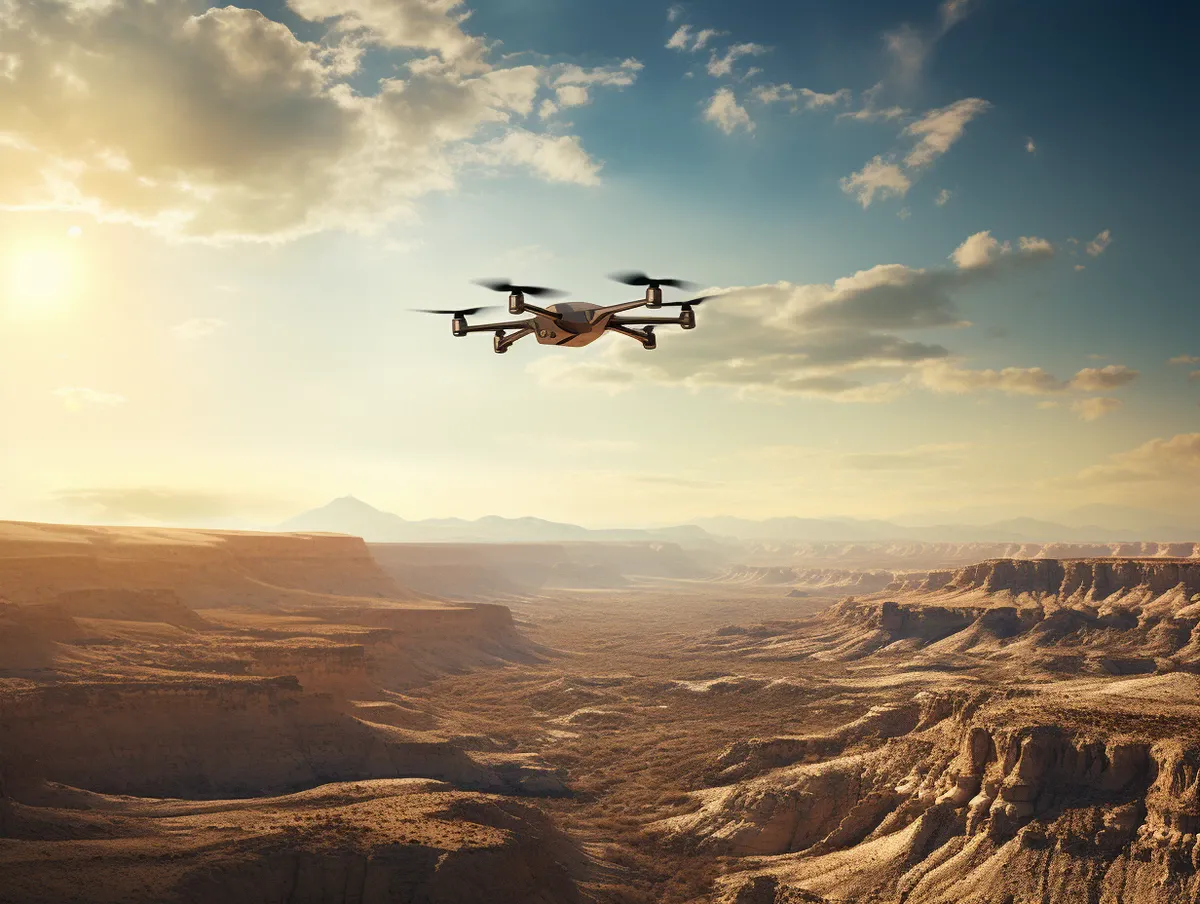
12. When Drones Play Music
Did you ever think that a drone could be your next favorite DJ? Well, maybe not exactly, but drones have been making waves in the world of music – and not just by being filmed in music videos.
From being equipped with speakers to playing tunes in the sky, to even being programmed to perform a symphony in coordination with each other, drones are hitting the high notes in style. Concerts in the future might just feature drone orchestras, giving a new spin (pun intended) to “live music”.
13. Dancing Drones in the Sky
Drones aren’t just about work; they know how to party! Drone light shows are becoming the new fireworks, minus the noise and smoke.
Hundreds, sometimes thousands, of drones are meticulously programmed to fly in sync, creating jaw-dropping visuals and patterns in the night sky. These mesmerizing aerial ballets not only offer a more sustainable alternative to traditional pyrotechnics but are also reshaping our notions of nighttime entertainment.
14. Drones and Privacy
Now, as cool as drones are, they come with some… let’s call them, “peeping” concerns. With many drones equipped with high-resolution cameras, concerns about privacy invasions have skyrocketed. Picture this: You’re sunbathing in your backyard, thinking you’re alone, and then you hear that familiar buzz.
It’s not just about nosy neighbors anymore; businesses and governments also utilize drones for various purposes. As a result, many countries are implementing stricter regulations, ensuring that while drones may reach great heights, they respect personal boundaries.
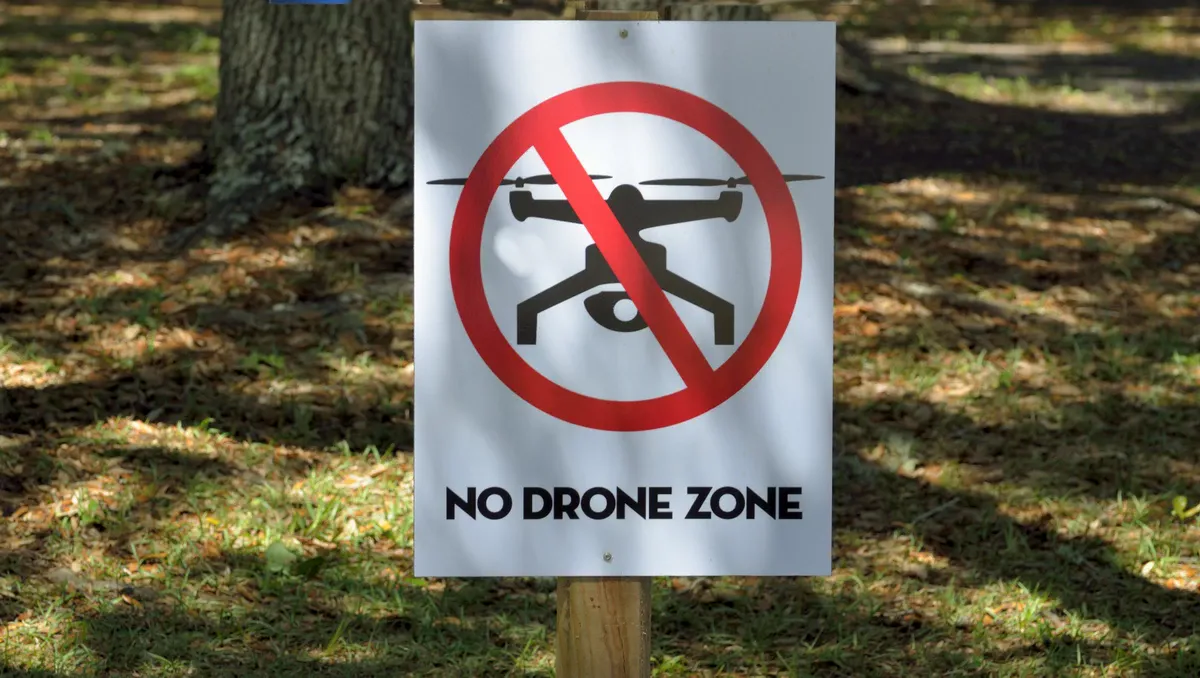
Image source: Wikimedia Commons
15. Drones and Disaster Relief
Drones are not just cool tech toys; they’re bona fide heroes in the face of disaster. When roads are blocked, and areas become inaccessible, drones swoop in (literally!) for the rescue.
From capturing real-time imagery to assess damage, to delivering essential supplies, drones have become a lifeline in disaster management. After events like earthquakes, hurricanes, or floods, they provide vital information to emergency services, ensuring the right aid reaches the right place at the right time.
Who knew that a buzzing tech gadget could also be a beacon of hope in dark times?
https://youtu.be/gDu1VEdI_lk
16. The Energy-Efficient Drone
While drones are undeniably cool, they also need to be efficient. That’s where energy-efficient drones come in, making longer flight times possible.
These drones harness advanced battery technologies and lightweight materials, maximizing their time in the air while minimizing their carbon footprint. Some are even exploring solar-powered drones, which, if successful, could redefine drone endurance and sustainability.
So, while they’re zipping around capturing those breathtaking aerial shots, they’re also giving Mother Nature a little nod of respect.
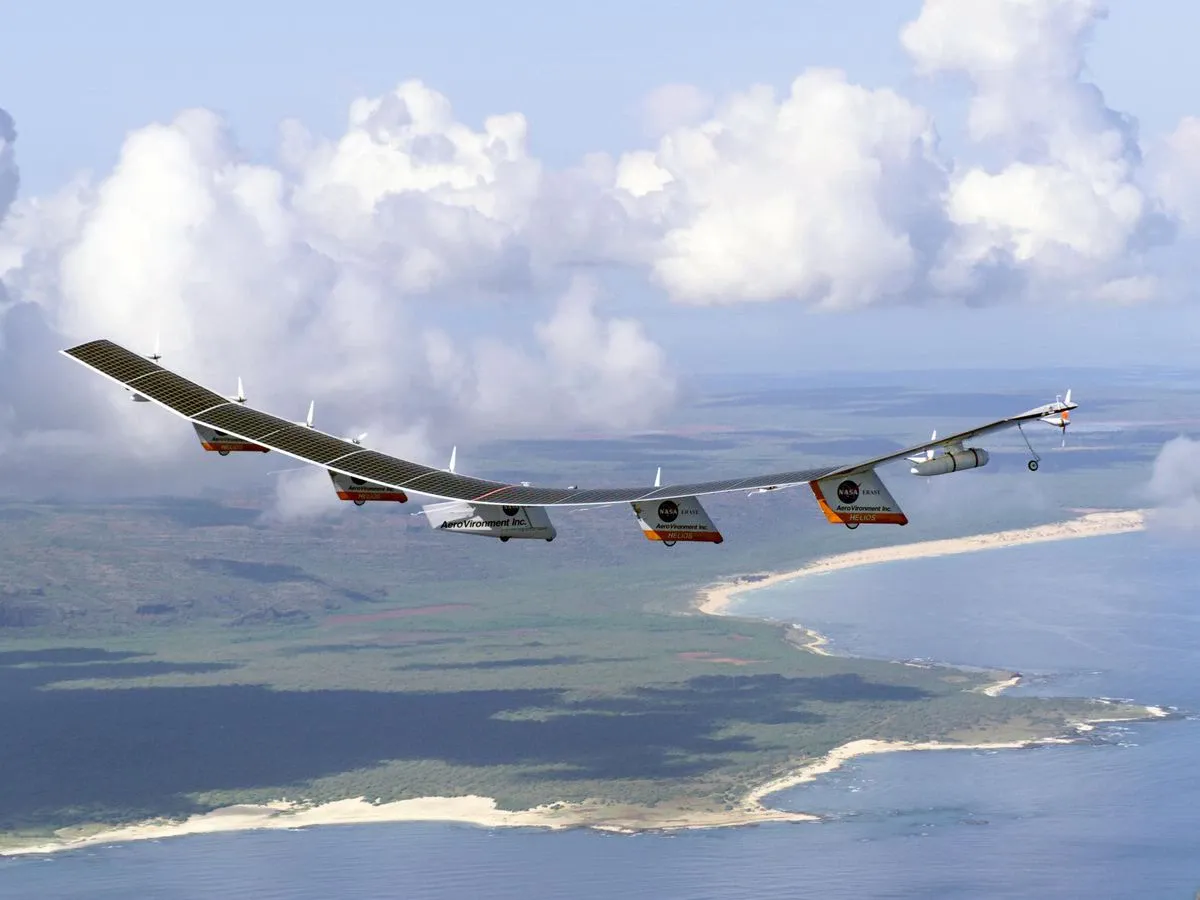
Image source: popularmechanics.com
17. Drones on Mars?
Hold onto your space helmets because this is truly out-of-this-world! While we’ve been buzzing about with drones here on Earth, NASA took it a step further. Enter Ingenuity, the Mars Helicopter.
This pint-sized powerhouse became the first aircraft to achieve powered flight on another planet. While it doesn’t capture Martian weddings or deliver space pizzas, Ingenuity’s main role is to scout and capture detailed images for scientific study.
One might say drones are not just conquering our skies but the universe!
18. The Sheer Number of Drones Out There!
If you’ve ever looked up and thought, “Hey, drones are becoming quite the thing,” you’d be spot on! The growth of the drone industry has been nothing short of explosive. Estimates suggest that there are millions of these flying wonders globally.
From recreational users capturing their vacations to professional drone photographers and businesses using them for everything under the sun, drones are soaring in popularity. And with constant advancements in tech, we can only expect this number to, well, fly even higher! Just think about it – at this rate, in a few years, we might have more drones than birds. Just kidding, maybe.
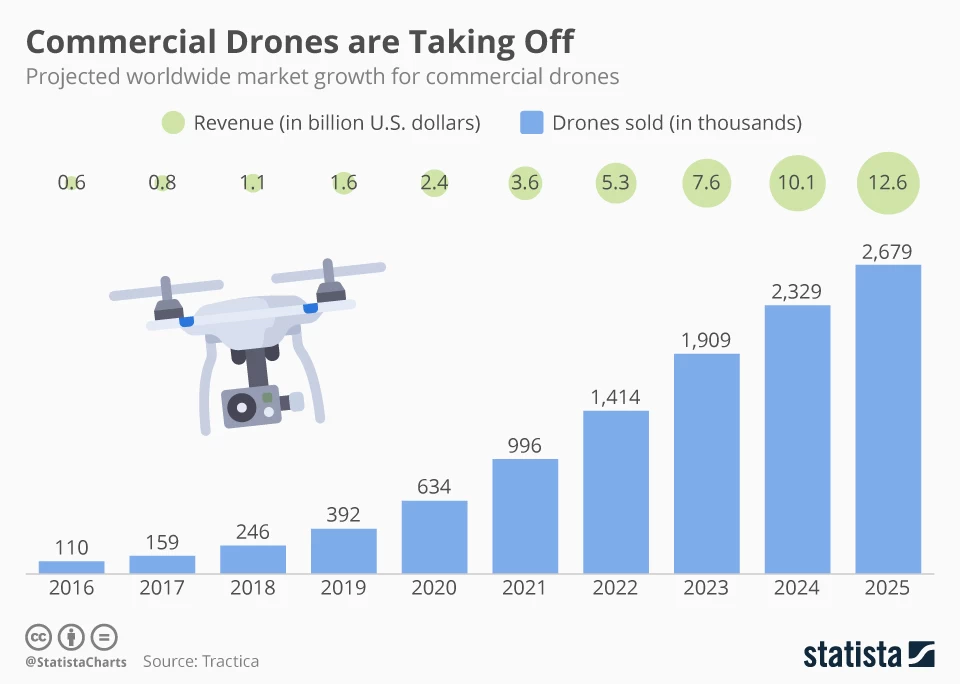
Image source: statista.com
19. Drones in Wildlife Conservation
Now, here’s something heartwarming for all the nature lovers. Drones aren’t just about flashy tech and fancy deliveries; they’re also turning out to be wildlife’s new best friend.
Conservationists are using drones to monitor endangered species, track poachers, and even map out habitats. This bird’s-eye view helps experts gain insights without disturbing the natural behavior of animals.
Whether it’s tracking elephant herds in Africa or monitoring nesting sea turtles, drones are proving invaluable in preserving our planet’s precious wildlife.
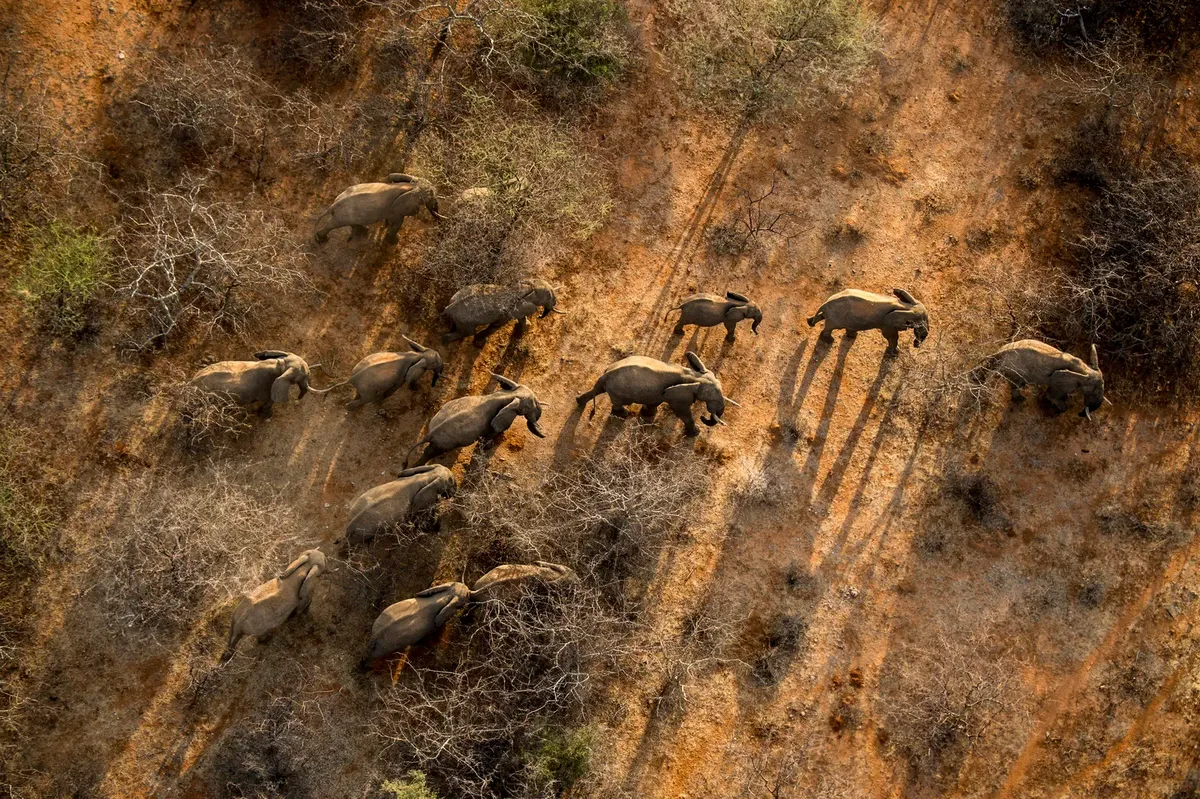
The Nature Conservancy in Africa / © Ami Vitale for The Nature Conservancy / Flickr
20. Drones in Construction
Forget hammers and nails; modern construction sites now buzz with the sound of drones. These flying wizards have revolutionized the construction industry.
From 3D mapping of sites, monitoring progress, ensuring worker safety, to spotting potential issues, drones provide a panoramic view of large-scale projects. Their ability to quickly survey vast areas and generate accurate data can save both time and money.
If you’ve ever passed by a construction site and saw a drone hovering above, just know it’s doing more than just taking aesthetic shots; it’s building the future!
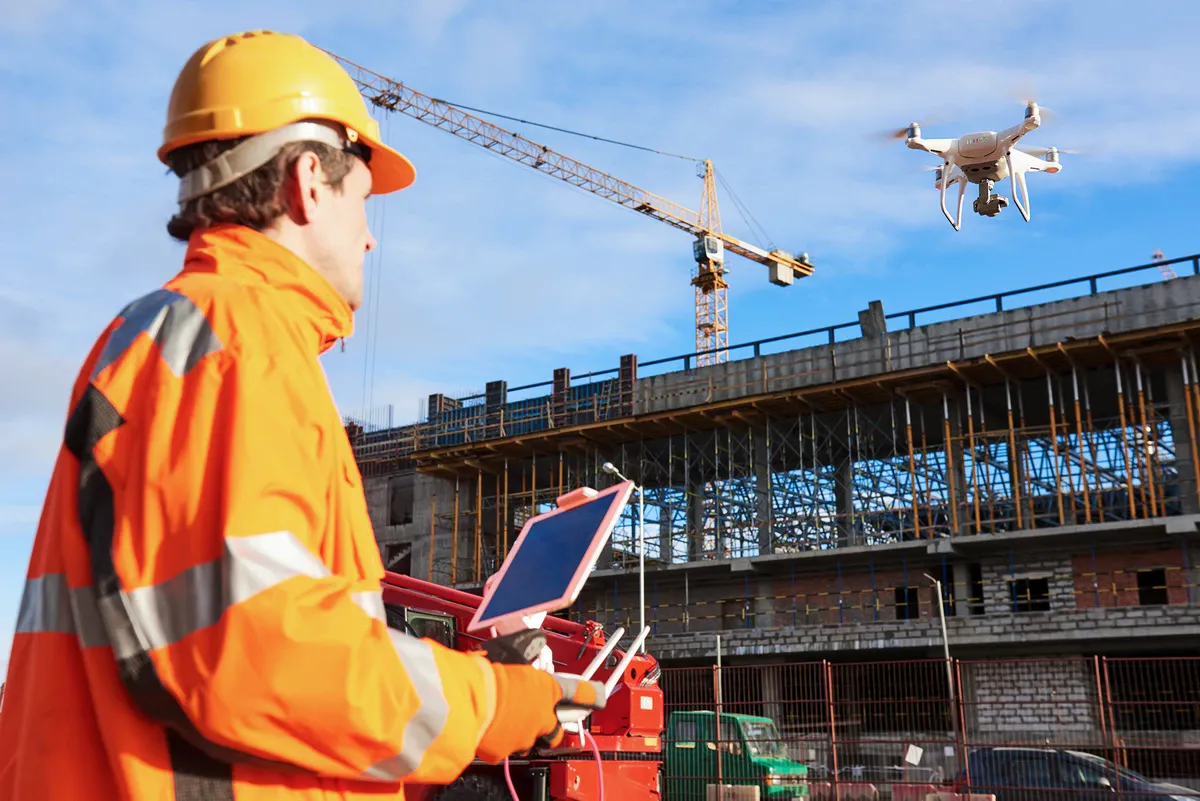
Image source: captechu.edu
21. Drones in Real Estate
Thinking of buying a house? Maybe you’d like a bird’s-eye view first? Enter the magic of drone photography in the realm of real estate.
Agents are increasingly using drones to showcase properties, offering potential buyers a unique perspective that ground photos simply can’t provide. These aerial views can capture the essence of a property, its surroundings, and the neighborhood vibe, giving buyers a fuller picture (literally!).
So, next time you’re house hunting online, and you come across a stunning top-down shot of a backyard pool, thank a drone!
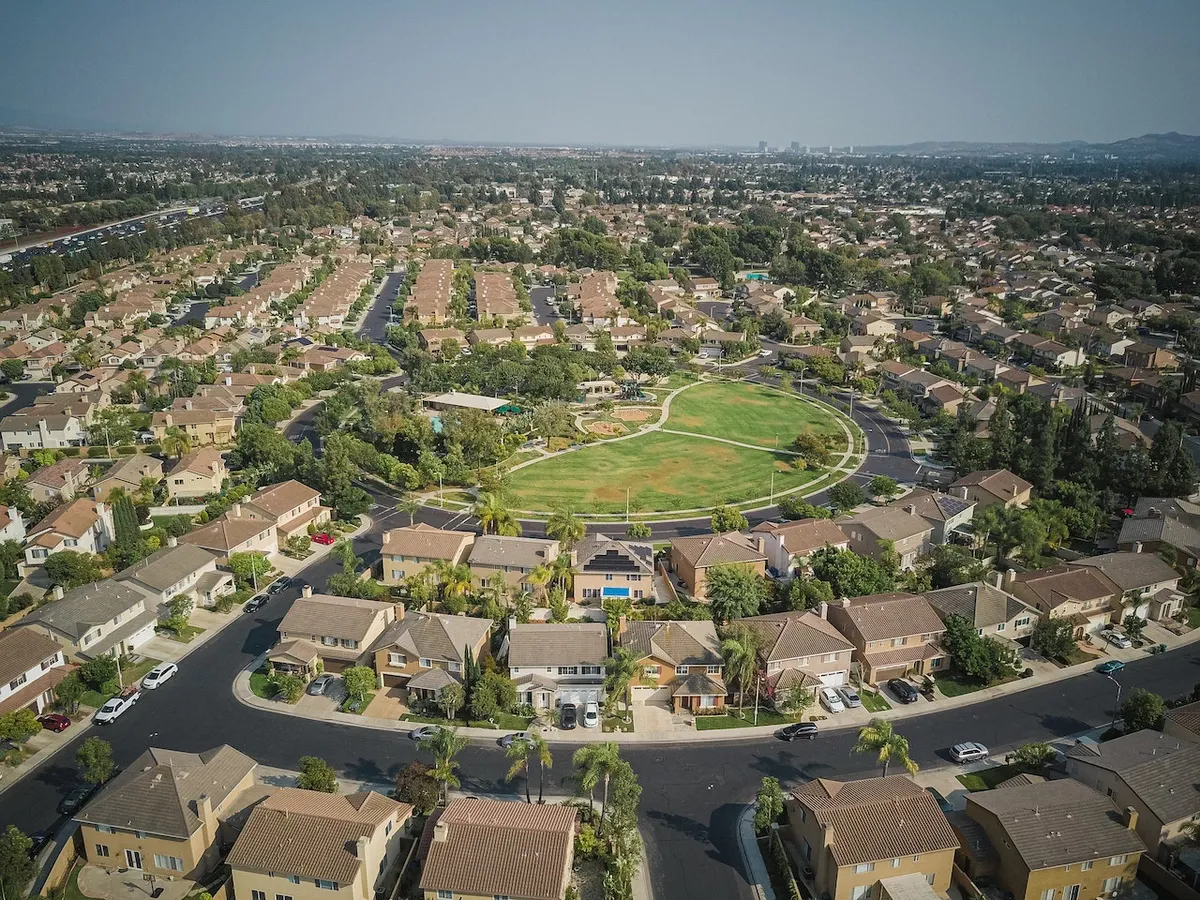
Kindel Media / Pexels
22. The Artistic Side of Drones
Beyond the tech and the trades, drones have swooped into the world of art. Artists and choreographers use drones to create mesmerizing light shows, dance performances, and even theatre!
With precise programming, drones can move in harmony, creating patterns, rhythms, and narratives that captivate audiences. It’s not just about the interesting facts and practicalities; it’s about pushing the boundaries of what art can be. Drones are proving they can be both brainy and artsy!
23. The Drone “No-fly” Zones
As Spiderman’s Uncle Ben famously said, “With great power comes great responsibility.” This holds true for drones too.
While they have unparalleled access to the skies, there are places even drones dare not venture. Airports, military bases, and certain government buildings often fall into drone “no-fly” zones. Flying in these areas can be a threat to safety and national security.
So, if you’re a budding drone pilot, always make sure you’re up-to-date on where your drone can and can’t fly. Safety first!
24. The Genius Behind The Drone
Ever wondered who invented drones? The concept of using unmanned aerial vehicles (UAVs) dates back to World War I.
Nikola Tesla, in the late 19th century, described a basic concept of using aerial combat vehicles. But the first genuine attempt was the development of “aerial target” drones in the 1930s. Modern drones, with their sophisticated cameras and sensors, are descendants of these early innovations.
So, the next time you’re marveling at a drone, remember to tip your hat to the geniuses from yesteryears who made it all possible.
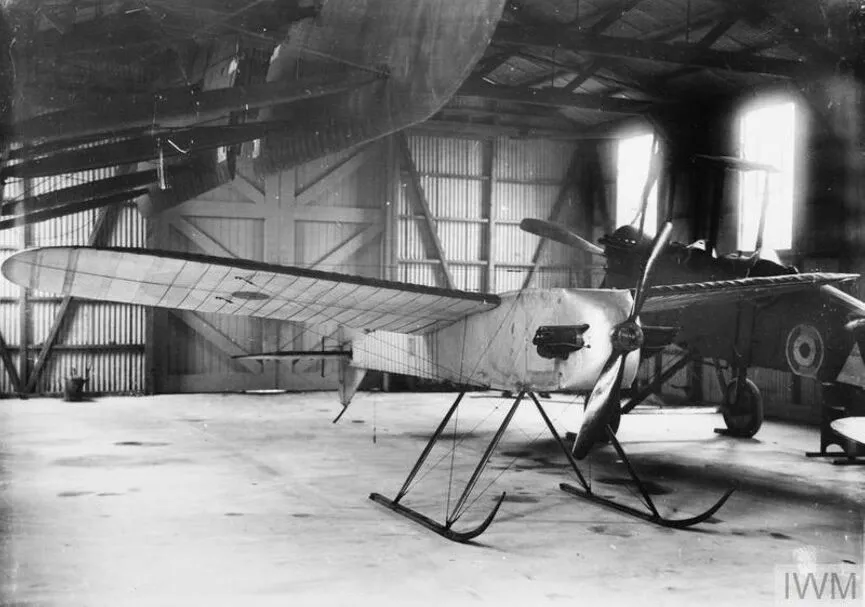
© Archibald Low (Q 67991) / iwm.org.uk
25. Drone Journalism: Reporting from the Skies
The world of journalism has seen a sky-high twist with the introduction of drones. No longer limited by ground-based obstacles, journalists now harness the power of drones to capture news from angles previously unimaginable.
From covering natural disasters and political rallies to documenting social events and environmental issues, drones offer a unique bird’s-eye view that adds depth and context to news stories. They’ve been particularly valuable in situations where human access is either dangerous or restricted.
With drone journalism on the rise, news reporting is not just about being on the ground; it’s about soaring above and offering viewers a comprehensive visual narrative.
FAQ
What are 10 interesting facts about drones?
- Ancient Drones?: While modern drones are a recent innovation, the concept dates back to World War I. One of the earliest recorded uses of a drone was the development of “aerial target” drones by the U.S. military in the 1930s.
- Wide Range of Sizes: Drones can vary widely in size, from large military drones like the MQ-9 Reaper, which has a wingspan of 66 feet, to tiny nano-drones that can fit in the palm of your hand.
- Diverse Applications: While many people associate drones with either military operations or recreational use, they are used in a variety of sectors, including agriculture (for crop monitoring), real estate (for property showcasing), conservation (for monitoring wildlife), and even in delivery services.
- Racing Drones: Drone racing has become a popular sport. Pilots use First Person View (FPV) goggles to navigate their drones through challenging courses at high speeds.
- Ambulance Drones: In some parts of the world, drones have been tested to deliver Automated External Defibrillators (AEDs) to the scene of a cardiac arrest faster than traditional emergency services.
- Booming Commercial Market: The global commercial drone market is projected to surpass USD 699.8 billion by 2032, with a Compound Annual Growth Rate (CAGR) of 38.17%.
- Tightening Regulations: Due to concerns over safety, privacy, and national security, many countries have introduced strict regulations governing drone use. In the U.S., for instance, the Federal Aviation Administration (FAA) has set up rules for both recreational and commercial drone pilots.
- Environmental Monitoring: Drones have been a boon for environmentalists. They’re used to monitor deforestation, track animal migration, and even detect illegal fishing or hunting activities.
- Solar-powered Drones: Some companies are developing drones powered by solar energy. These drones can remain airborne for extended periods, making them ideal for surveillance, research, and other long-duration tasks.
- Swarm Technology: Rather than operating as individual units, some drones are now being developed to function in swarms, coordinated in their movements and tasks. This technology has applications in areas like agriculture, where a swarm of drones can monitor or treat large areas of crops more efficiently, or in entertainment, where drone light shows have become increasingly popular.
What 3 things can drones do?
- Capture aerial photographs and videos.
- Monitor and gather data for agricultural fields.
- Deliver small packages or medical supplies.
What are the 5 benefits of drones?
- Provide quick and efficient surveillance capabilities.
- Reduce human risk in dangerous situations or terrains.
- Offer cost-effective solutions for aerial photography and videography.
- Aid in data collection for research and conservation efforts.
- Enable faster response times in emergency situations, like delivering medical equipment.
Why is it called a drone?
The term “drone” historically referred to a low, continuous noise, resembling the sound made by male bees. Unmanned aircraft made a similar humming noise, leading to their being dubbed “drones.”
Why are drones interesting?
Drones are interesting because they represent a convergence of various technologies like aviation, robotics, and artificial intelligence. They have the potential to revolutionize many industries, from entertainment to agriculture, by offering capabilities that were once expensive, dangerous, or even impossible.
What are 10 uses of drones?
- Aerial photography and filmmaking.
- Agricultural monitoring and crop spraying.
- Wildlife and conservation research.
- Search and rescue operations.
- Delivery of goods and medical supplies.
- Infrastructure inspection (like bridges or power lines).
- Real estate property showcasing.
- Environmental monitoring and data collection.
- Military surveillance and combat operations.
- Racing and recreational flying.
What drones Cannot do?
- Operate beyond their battery life or range.
- Typically fly in extreme weather conditions like heavy rain or storms.
- Bypass regulations set by aviation authorities (e.g., flying near airports).
- Replace human judgment and intuition in certain complex scenarios.
- Function without some form of control system, whether manual or automated.
What are the 4 types of drones?
- Multi-Rotor Drones: These are the most common type, often used for photography and videography.
- Fixed-Wing Drones: They resemble traditional airplanes and can cover longer distances.
- Single Rotor Helicopters: Similar to actual helicopters, they’re often used for specialized tasks.
- Fixed-Wing Hybrid Drones: These drones combine characteristics of both fixed-wing and multi-rotor drones, allowing for vertical takeoff and landing while retaining efficient forward flight.
How far can drones fly?
The range varies widely based on the drone’s design, purpose, and technology. Some consumer drones have a range of a few miles, while certain military drones can operate over distances of hundreds of miles. Regulations often restrict how far drones can fly from their operators.
Who invented the drone?
The history of drones is complex and has evolved over time. The earliest recorded use of an “aerial target” drone was by the U.S. military in the 1930s. However, the concept of using unmanned aircraft for warfare dates back to World War I with the development of aerial torpedoes or “flying bombs.” Dr. Nikola Tesla also described a concept of an unmanned vehicle in the late 19th century, which he termed a “teleautomaton.”


